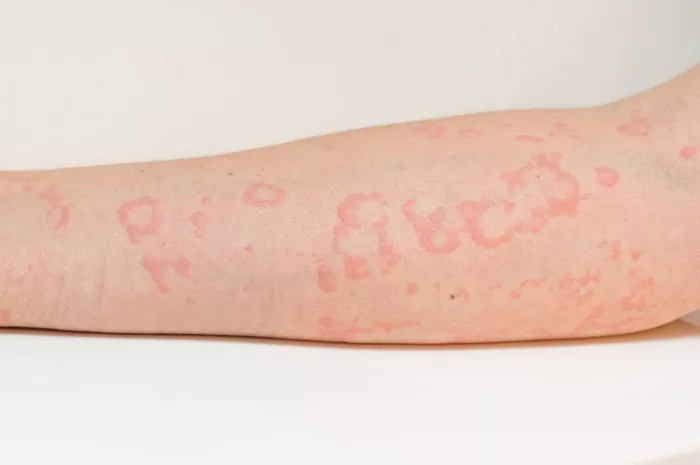Chronic hives, medically termed chronic urticaria, and angioedema are conditions that affect millions worldwide, often causing significant discomfort and distress. Despite their prevalence, the exact mechanisms behind these conditions remain elusive, posing challenges for both patients and healthcare providers. In this comprehensive exploration, we delve into the multifaceted nature of chronic hives and angioedema, examining the diverse factors that contribute to their onset and persistence.
Defining Chronic Hives and Angioedema
Before delving into the causes, it’s crucial to understand the conditions themselves. Chronic hives manifest as raised, red welts on the skin, typically accompanied by itching and sometimes burning or stinging sensations. These hives can appear suddenly and persist for weeks, months, or even years, significantly impacting an individual’s quality of life.
Angioedema, on the other hand, involves swelling in the deeper layers of the skin, often around the eyes and lips or in the hands, feet, genitals, or throat. While it shares some similarities with hives, angioedema causes a more pronounced swelling, which can lead to pain and difficulty breathing if it affects the throat.
The Immunological Puzzle
One prevailing theory regarding the etiology of chronic hives and angioedema revolves around the immune system. In many cases, these conditions are believed to result from an abnormal immune response, where the body mistakenly identifies harmless substances as threats, triggering the release of histamine and other inflammatory chemicals.
Autoimmune factors may also play a role, as evidenced by the presence of autoantibodies targeting components of the skin’s mast cells or basophils, which are involved in the allergic response. This autoimmune hypothesis is supported by the efficacy of treatments such as antihistamines and immunosuppressants in managing symptoms.
Triggers and Provocateurs
Identifying triggers is crucial in managing chronic hives and angioedema. While triggers vary from person to person, common culprits include certain foods (such as nuts, shellfish, eggs, and dairy), medications (particularly nonsteroidal anti-inflammatory drugs and antibiotics), insect stings, physical stimuli (like pressure, heat, or cold), and emotional stress.
Additionally, infections, particularly those caused by bacteria or viruses, can sometimes serve as triggers or exacerbate existing symptoms. Understanding and avoiding these triggers can significantly reduce the frequency and severity of flare-ups.
Genetic Predispositions
Genetics also appear to play a role in predisposing individuals to chronic hives and angioedema. Studies have identified specific genetic variations associated with an increased risk of developing these conditions. For instance, variations in genes encoding proteins involved in immune regulation or histamine metabolism may influence susceptibility.
Moreover, familial clustering of chronic hives and angioedema suggests a hereditary component, further underscoring the genetic basis of these conditions. However, the interplay between genetic predispositions and environmental factors remains an area of ongoing research.
Neurological Influences
The intricate connection between the nervous system and the immune system also merits attention in the context of chronic hives and angioedema. Stress, anxiety, and other emotional factors can exacerbate symptoms or trigger flare-ups, highlighting the role of neurogenic inflammation in these conditions.
Furthermore, conditions like chronic stress or anxiety disorders may dysregulate immune function, contributing to the persistence of symptoms. Addressing psychological factors through relaxation techniques, cognitive-behavioral therapy, or stress management strategies can complement medical interventions in managing chronic hives and angioedema.
Underlying Medical Conditions
In some cases, chronic hives and angioedema may occur secondary to underlying medical conditions. Autoimmune disorders like lupus, thyroid diseases, and vasculitis have been associated with these dermatological manifestations. Treating the underlying condition is essential in such cases to alleviate symptoms and prevent recurrence.
Similarly, infections such as hepatitis, HIV, or Helicobacter pylori have been implicated in the pathogenesis of chronic hives and angioedema. Addressing the underlying infection may lead to resolution of cutaneous symptoms, highlighting the importance of a thorough diagnostic workup in managing these conditions.
Iatrogenic Factors
It’s crucial to acknowledge the role of medications in triggering or exacerbating chronic hives and angioedema. Certain drugs, including antibiotics, nonsteroidal anti-inflammatory drugs, ACE inhibitors, and opioids, have been implicated in causing allergic reactions or pseudoallergic reactions resembling urticaria and angioedema.
Moreover, substances like alcohol or food additives may contain histamine or histamine-releasing compounds, exacerbating symptoms in susceptible individuals. Careful evaluation of a patient’s medication history and potential exposures is paramount in identifying and eliminating iatrogenic triggers.
Environmental Factors
Environmental influences, ranging from air pollution to climate changes, can also impact the prevalence and severity of chronic hives and angioedema. Pollutants and airborne allergens may exacerbate symptoms in susceptible individuals, while changes in temperature or humidity can trigger vasomotor responses, contributing to cutaneous manifestations.
Furthermore, exposure to irritants or chemicals in the workplace or household settings may elicit allergic or pseudoallergic reactions, necessitating environmental modifications or protective measures to mitigate risk.
Conclusion
Chronic hives and angioedema represent complex clinical entities with diverse etiologies and manifestations. While immunological, genetic, neurological, and environmental factors all contribute to their pathogenesis, the precise interplay between these factors remains incompletely understood.
Effective management requires a multidisciplinary approach, encompassing accurate diagnosis, identification of triggers, patient education, and tailored treatment strategies. By unraveling the enigma surrounding chronic hives and angioedema, healthcare providers can empower patients to regain control over their symptoms and improve their quality of life.
Related Topics:
























